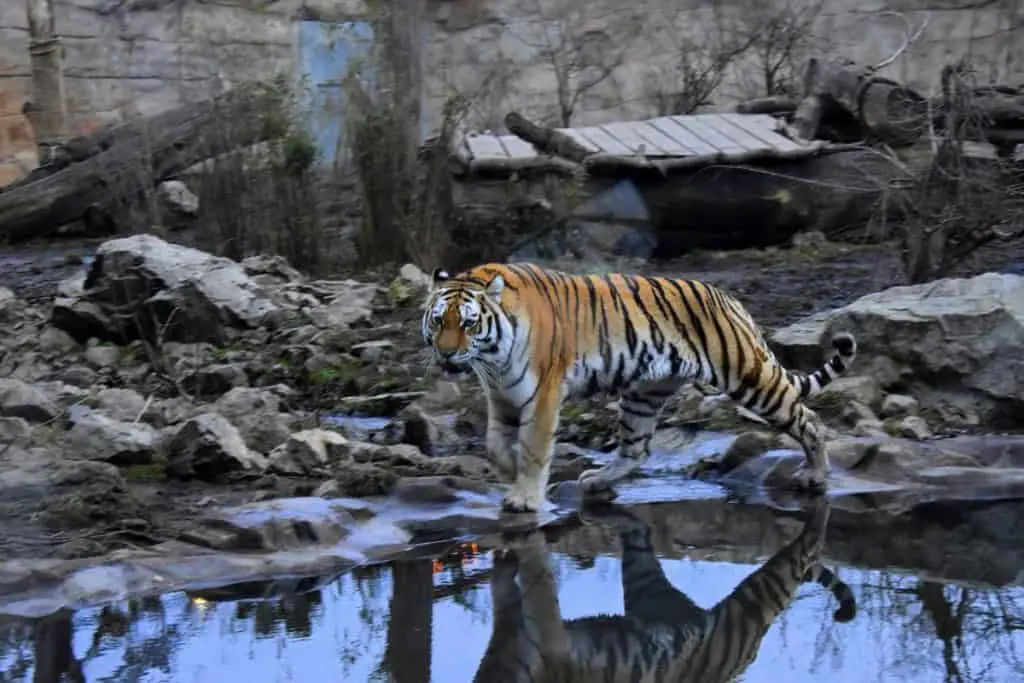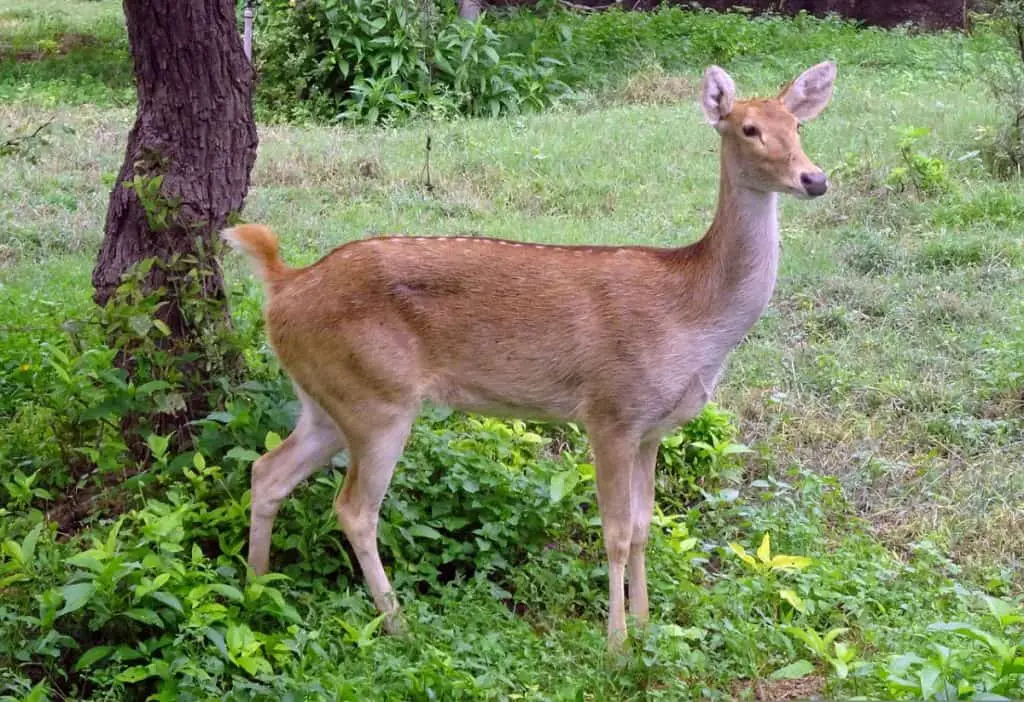India is a diverse country with many habitats and amazing wildlife, including some of the rarest on the planet.
There are approximately 92,000 species of wildlife in India, including over 60,000 species of insect. India has a diverse habitat with swamps, mangroves, sub-tropical, evergreens, deciduous forests, scrub, and alpine forests.
With so many species in India, it would be impossible to list them all here or go into detail, but here are a few of the most recognized or rare animals you can find in India.
Religious Association
One of the major factors helping to maintain the wealth of animal life is the influence of culture and religion. Most people in India are Hindus. Those who adhere strictly to these religions do no deliberate harm to any living creature.
Animals are closely associated with Hindu gods, such as the Naga or snake with Shiva and Vishnu, and the elephant, which forms the head of Ganesh, the god of wisdom. Buddhist stories frequently describe the noble qualities of animals, such as the elephant, as examples to people.
Cows are sacred to Hindus, and huge numbers of them live in every habitat in India, being allowed to forage wherever they like unharmed and consuming vast amounts of vegetation. Concern for the environment and an appreciation of the value of wildlife as a natural heritage are growing.

Tiger
The tiger is the national animal of both India and Bangladesh. This magnificent animal occurs in some Asian countries, but the main population is in the Indian subcontinent. While the Lion is the King of the Jungle, the tiger is called the spirit of the jungle. The Tiger inhabits all types of forest and was formerly found throughout India.
In 1970, a census revealed that the Indian population of the species had fallen alarmingly from an estimated 40,000 in 1930 to about 1,800 animals. The causes were loss of forest habitat, excessive hunting, and the soaring prices of skins on the international market.
Counts in other countries also showed serious declines, with evidence of only about 5,000 Tigers throughout its huge range. To meet this crisis, Project Tiger was launched in 1972, leading to the banning of Tiger hunting and the establishment of tiger reserves throughout the subcontinent.
Initially, Project Tiger had some success, but by the early 1990s, it became clear that the tiger was again fighting for survival in India. The poaching rate had rapidly increased and was believed to be equal to one tiger a day.
Poaching is driven by the demand for tiger bones and parts used in traditional Chinese medicines. This commercial trade is not new, as tiger bones have been used to provide care for more than 1,000 years. Its recent popularity and the rise of China’s population of tigers and stockpile of Tiger bones led to increased demand.
Half of the Project Tiger reserves are rapidly deteriorating due to population pressures and numerous development projects, such as mining and dams. Hope for the Tiger awoke again in 1997 when the then prime minister made a new commitment to protect the country’s wildlife, with the tiger, in particular, a concern.
Primates
The Tiger reserves have helped protect many other threatened animals, such as the beautiful Golden Langur at Manas National Park. This large diurnal primate was not described until 1956. It lives in a very restricted range in the mixed deciduous forests of northwest Assam and Bhutan.
There are fourteen species of primate in India, with five langurs, six species of macaques, two loris, and one species of gibbon, and nine of these live in Assam.
The nine species in Assam are Gee’s Golden Langur, Capped Langur, Phayre’s Leaf Monkey, Assam Macaque, Arunachal Macaque, White Cheeked Macaque, Stump Tailed Macaque, Northern Pig-tailed Macaque, Hoolock Gibbon, and the Bengal Slow Loris.
Indian Rhinoceros
Another Assamese species at risk is the Indian Rhinoceros, the main population of which occurs in the tall grasslands of Kaziranga National Park. Since ancient times, rhinos have been another highly prized source of traditional Chinese medicine. The rhino population has continued to fall despite a ban on international trade in rhino horn.
Enforcement of the ban was initially weak, and anti-poaching efforts were underfunded because little was done to reduce the demand for rhino horn in consumer countries. In recent years, however, this has changed. Long-used trade routes have closed due to strong international efforts, and China has been highly successful in implementing its domestic ban on trade in rhino horn. The rhino population would not be able to support demand from China for very long before becoming extinct.
Birds
Assam’s grasslands are a stronghold for the Bengal Florican, a critically endangered bustard. This florican is recorded in Nepal, Bangladesh, and Cambodia and has recently been rediscovered in Vietnam. Its reputation of being one of the most delicious gamebirds in India contributed greatly to its early decline.
Much of its habitat has been claimed for agriculture, and most of the remaining grasslands are burned annually to encourage the growth of a new flush of grass for grazing herbivores and thatching.
Another inhabitant of these grasslands, Finn’s Baya Weaver, is now extremely local, with populations in northwest India and Assam.
To the north of Assam’s lowland grasslands lie the Himalayas, the highest mountain chain in the world. The Himalayas are rich in pheasant species, including two species in the western part of the range: the gorgeously plumed Western Tragopan is the rarest pheasant worldwide, endangered by deforestation and hunting in temperate forests. The Cheer Pheasant is mainly threatened by hunting on steep grassy slopes.
Red Panda
The Lesser or Red Panda is another seriously threatened inhabitant of temperate Himalayan forests. Being nocturnal, not much is known about them still. However, a study in Langtang National Park in Nepal revealed that it is particularly susceptible to human disturbance as well as to the loss of its forest habitat.
Snow Leopard
The Snow Leopard occurs mainly north of the Himalayan range, but many people associate it with these mountains. Despite protection, it is still widely hunted for its beautiful pelt. However, the reduction in the population of its natural prey, mainly wild sheep, is considered the largest threat to its long-term survival.

Insects
With about 60,000 species of insects in India, and possibly the same waiting to be discovered, there is a wide variety of insects to be found.
Insects have a huge influence on agricultural ecosystems. While insects do cause loss in crop production and cost the country a huge amount of money, there are also many beneficial insects.
Invertebrates in the Himalayas are also suffering from deforestation. These include a dragonfly surviving from the Mesozoic era and now known only from the eastern Himalayas in India and Nepal.
The butterfly is the national insect of India and there are about 1,300 species in the country. India also has one of the most spectacular of butterflies is the Kaiser-I-Hind which has been recorded in Nepal over thickly wooded hills in the temperate zone. It also occurs in Sikkim, Arunachal Pradesh, and Burma.
Many species of insects are likely to be extinct in the next few decades, with 35 species of butterfly critically endangered.
Thar Desert
The great Indian or Thar desert in northwest India and Pakistan is home to the Blackbuck. Regarded as sacred by Indians, this antelope is widely illustrated in Indian paintings and sculptures, and its skin is used in religious ceremonies.
It was once common in the desert, but hunting, competition for grazing from the constantly increasing population of domestic cattle, and the spread of cultivation have reduced its population to small, disjoined pockets.
The most outstanding bird in the Thar desert is the Great Indian Bustard, the males of which stand more than a meter (3/4 feet) tall and weigh up to 14 kilograms (31 pounds), one of the heaviest flying birds worldwide. It is confined to the Indian subcontinent and is now rare.
Hunting, egg collecting, loss of thorn scrub and the extension of agriculture have all contributed to its decline. Despite considerable efforts made to save it, the Great Indian Bustard continues to decline, and there are thought to be only 300 left worldwide and is on the verge of extinction.

Deccan
Wildlife is abundant in the less populated areas of the Deccan, the great plateau in peninsular India, notably at Kanha National Park. The Barasingha or Swamp Deer has suffered drastic declines, mainly because of losses of its tall, swampy habitat. It is confined to India and Nepal, and the central Indian subspecies is almost entirely restricted to Kanha.
Two of the most exciting ornithological events in India have been the rediscovery of two of the country’s endemic bird species – Jerdon’s Courser and Forest Owlet. Both birds have only been recorded rarely since their discovery.
After intensive searching, the nocturnal courser was spotted in 1986 in Andhra Pradesh. There are currently thought to be less than 250 birds, although this could be as low as 30. The Forest owlet was found in degraded forest in Maharashtra in 1997 and there are thought to be less than 1000 alive.
Another endemic mammal of the southern Indian hills is the Nilgiri Tahr, a wild goat restricted to rock and grass-covered slopes above the tree line. As with many species, it is suffering from fragmentation and reduction of its habitat.
The humid, dense forests of the Western Ghats and the other south Indian hills support a richer fauna than the adjoining dry Deccan, including some species which are restricted to them, such as the handsome Lion-tailed Macaque. Once widely traded for zoos, this macaque is now considered endangered and given full protection.

